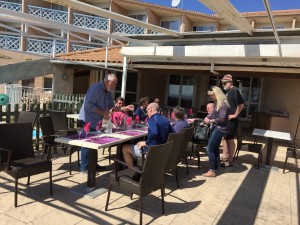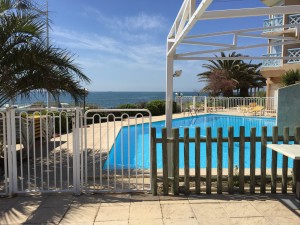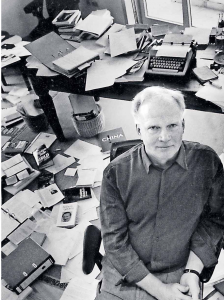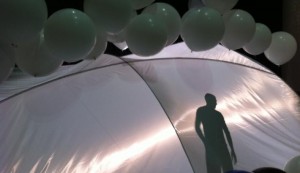Broadway World, August 25, 2014– The Kitchen and the Brown Institute for Media Innovation at Columbia University’s Graduate School of Journalism are pleased to present the U.S. premiere of Gaïa Global Circus, a one-of-a-kind theatrical experiment that explores society’s ambivalence toward mankind’s greatest threat: global warming.
The French philosopher, anthropologist and sociologist Bruno Latour conceived the project with Frédérique Aït-Touati and Chloé Latour. Pierre Daubigny wrote the play, the companies Compagnie AccenT and Soif Compagnie produced it, and Claire Astruc, Luigi Cerri, Jade Collinet and Matthieu Protin perform it.
Gaïa Global Circus premiered at dOCUMENTA 13 in September, 2012. The play is performed in English and is the centerpiece of a series of events, including a public lecture and Q&A with The New Yorker writer and professor Nicholas Lemann on September 22, presented by the David and Helen Gurley Brown Institute for Media Innovation at Columbia Graduate School of Journalism, with assistance from Alliance (Columbia University, École Polytechnique, Sciences Po, and Panthéon-Sorbonne University), the Center for Science and Society, the Faculty of Arts and Sciences and Maison Française at Columbia University.
Performances of Gaïa Global Circus will take place September 24 & 25 at 8pm at The Kitchen (512 West 19th Street, Manhattan). Tickets, $15 ($12 students, seniors), are available online at thekitchen.org or by phone at 212.255.5793 x11. Running time is 80 minutes with no intermission. Critics are welcome as of the first performance, which also serves as opening night.
In creating Gaïa Global Circus, Latour and his collaborators were inspired by a paradox: although we are confronted with global warming and the prospect of mankind’s end, we feel almost nothing. When scientific language is no longer capable of containing the full effect of climate change, how can we forge a new form of speech that allows us to grapple with our dilemma?
Although Latour spends most of his career lecturing, Gaïa Global Circus is not didactic. In fact, he concluded that scientific language is insufficient, and that only theater can help us understand our self-made predicament. Gaïa Global Circus puts forth a tapestry of scenes interweaving familiar and mythological characters-Gaïa, Noah and the ark, etc.-as they wrestle with this vast and inconceivable ecological question. The work is by turns poignant and humorous, combining Greek tragedy, philosophical wrestling, Jacques Lecoq-style theatrics and more.
The creative team includes Olivier Vallet of Compagnie les Rémouleurs (sets, machines), Elsa Blin (costumes), Olivier Vallet & Benoît Aubry (lighting), and Laurent Sellier (music).
The U.S. premiere of Gaïa Global Circus is co-presented by The Kitchen and the David and Helen Gurley BrownInstitute for Media Innovation at the Columbia University Graduate School of Journalism, with assistance from Alliance (Columbia University, École Polytechnique, Sciences Po, and Panthéon-Sorbonne University).
Read More: Broadway World

 Follow
Follow



